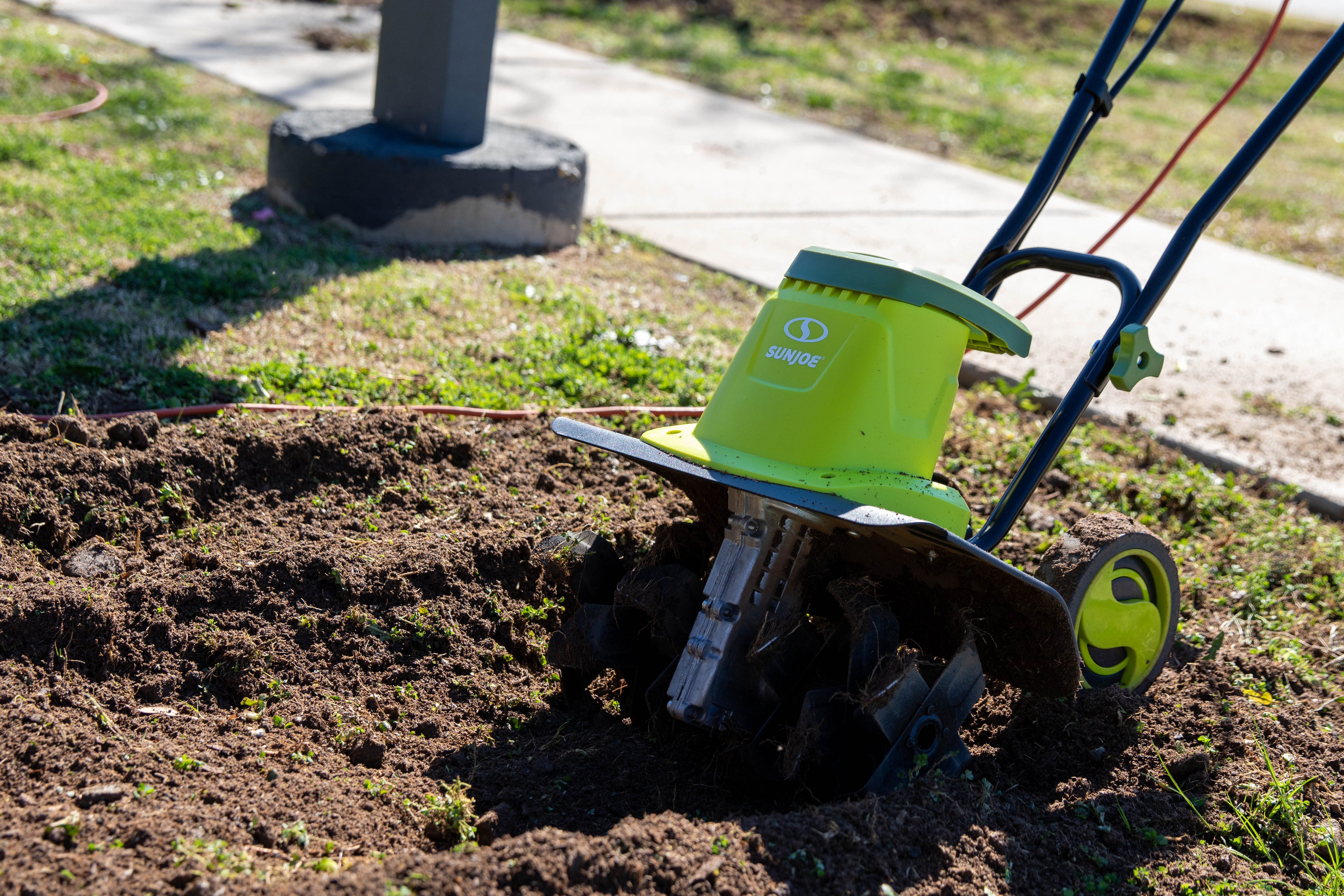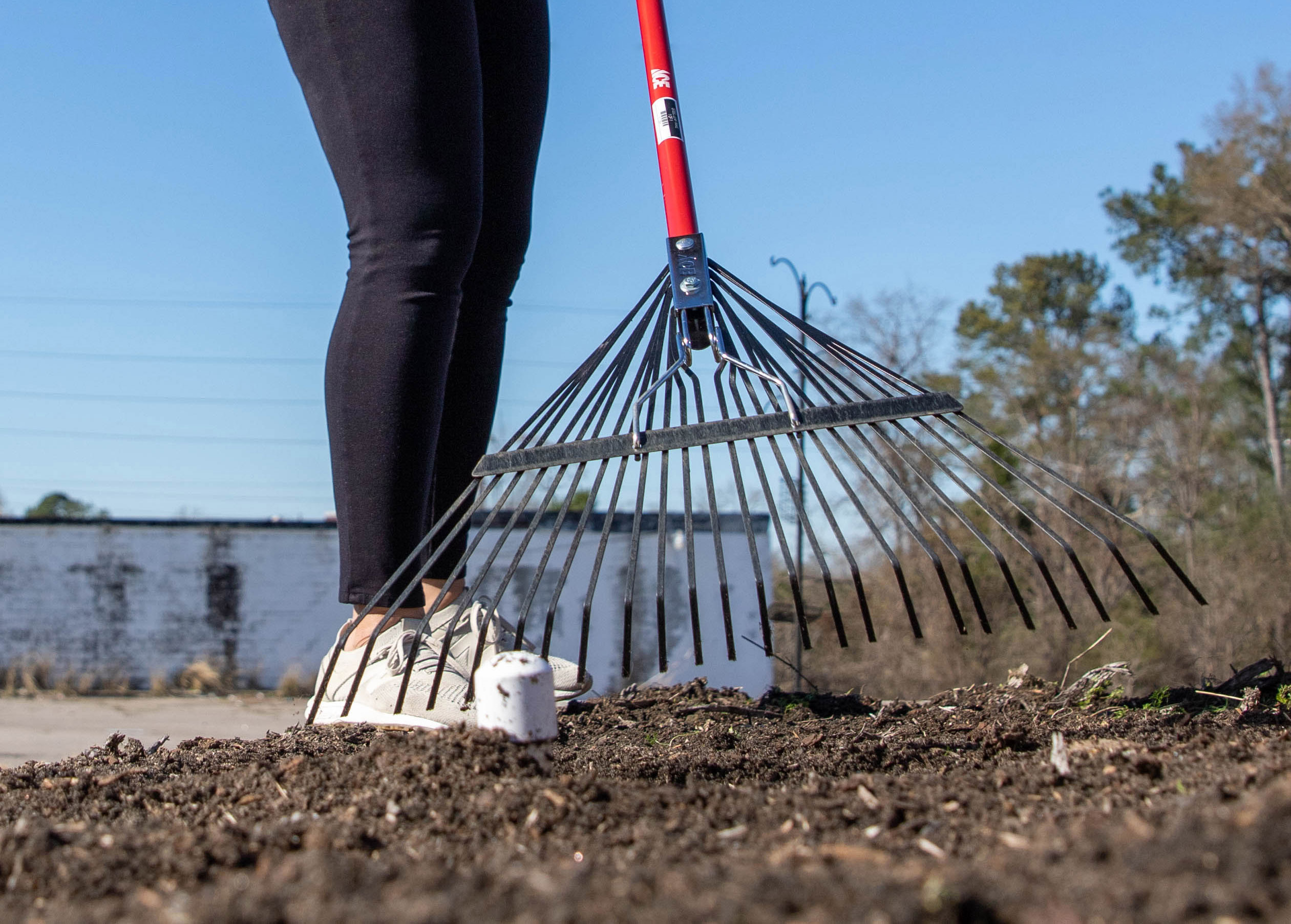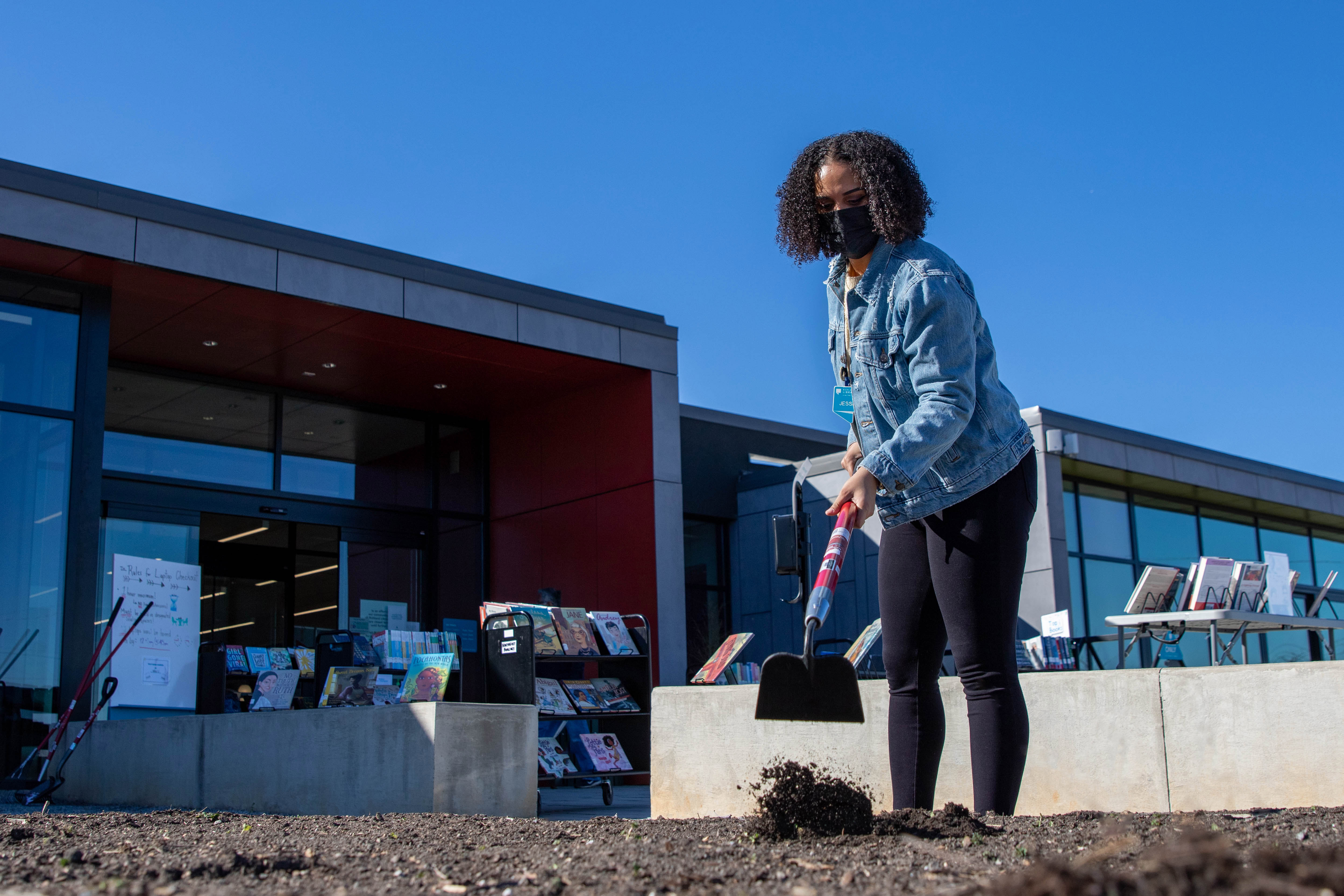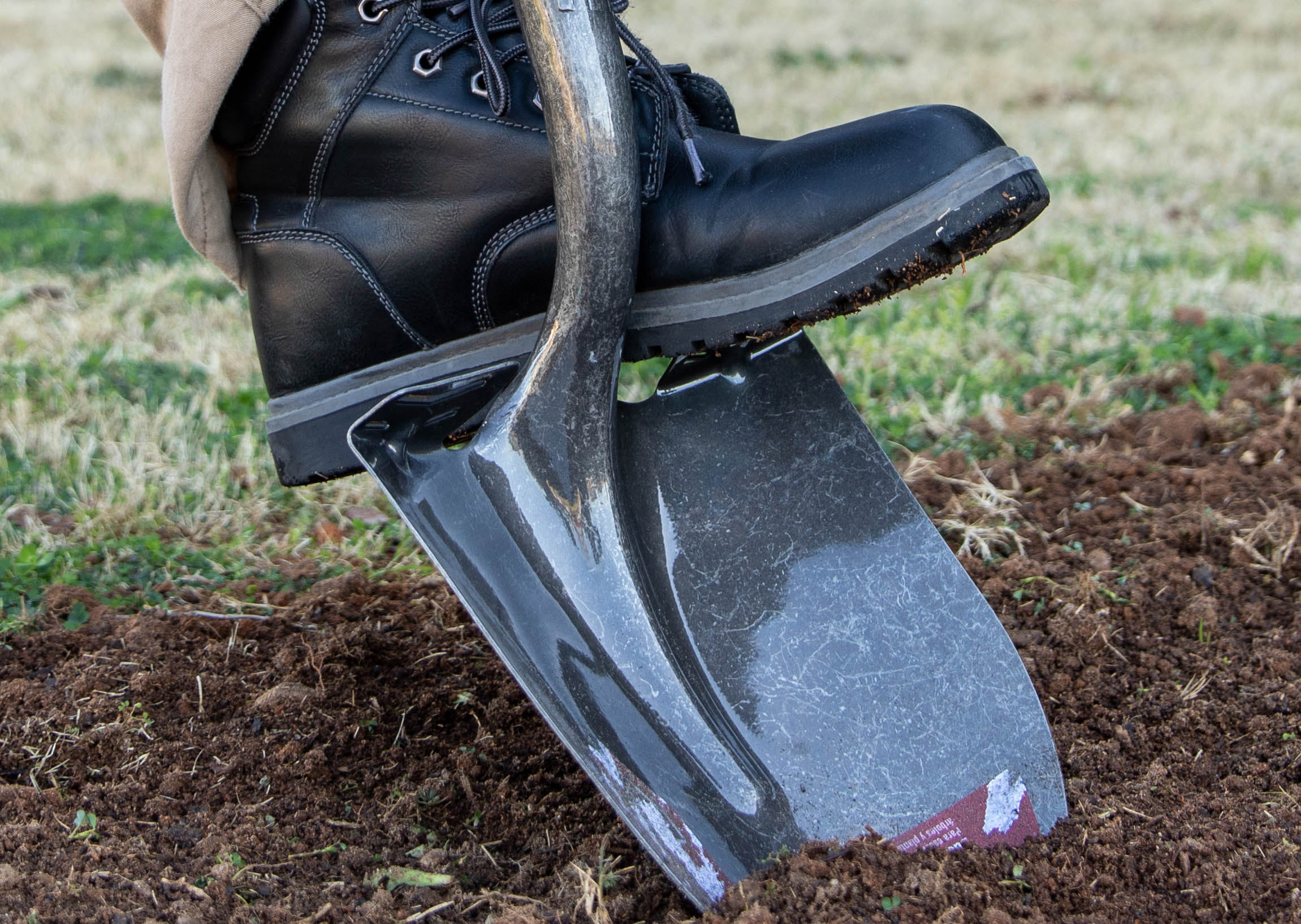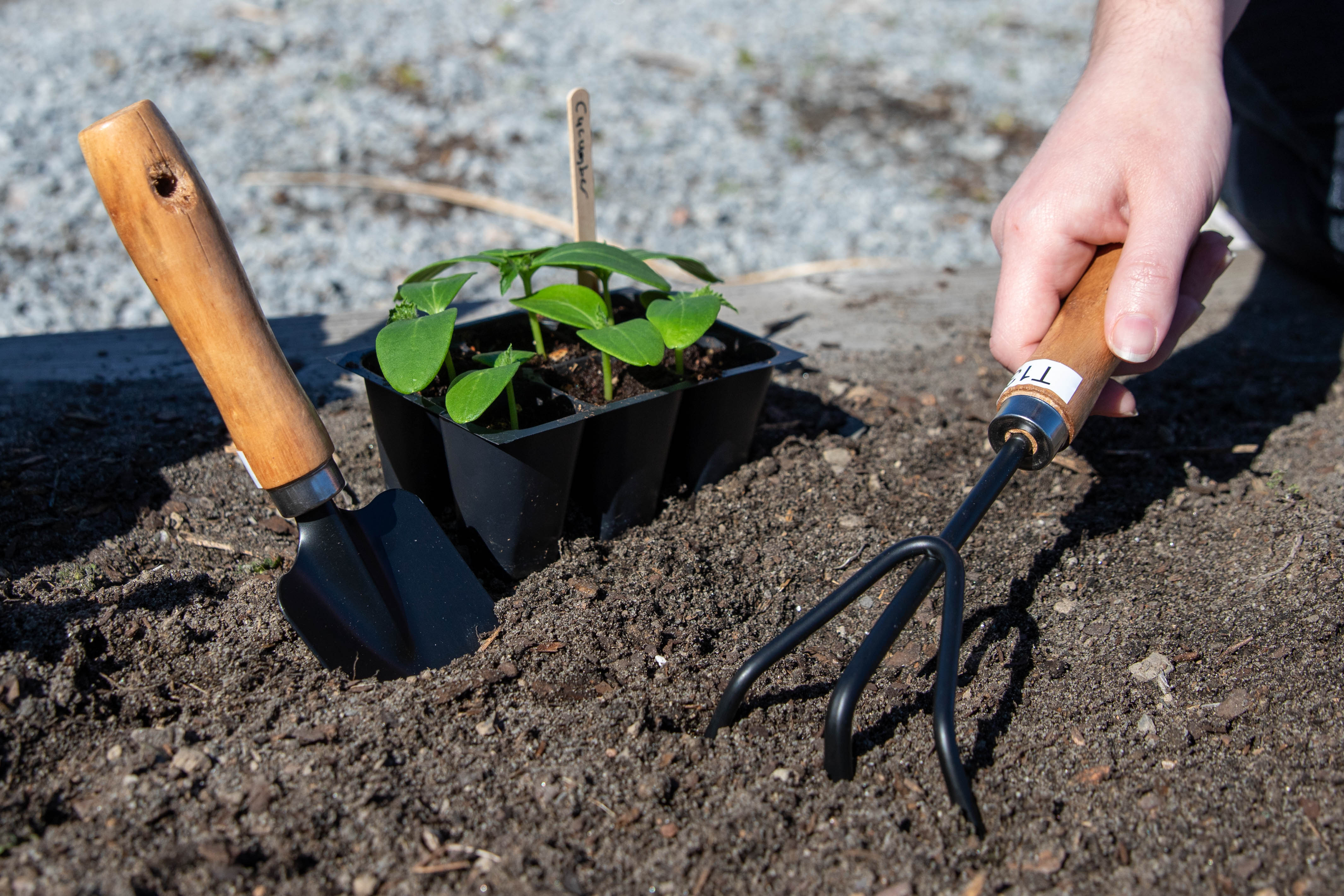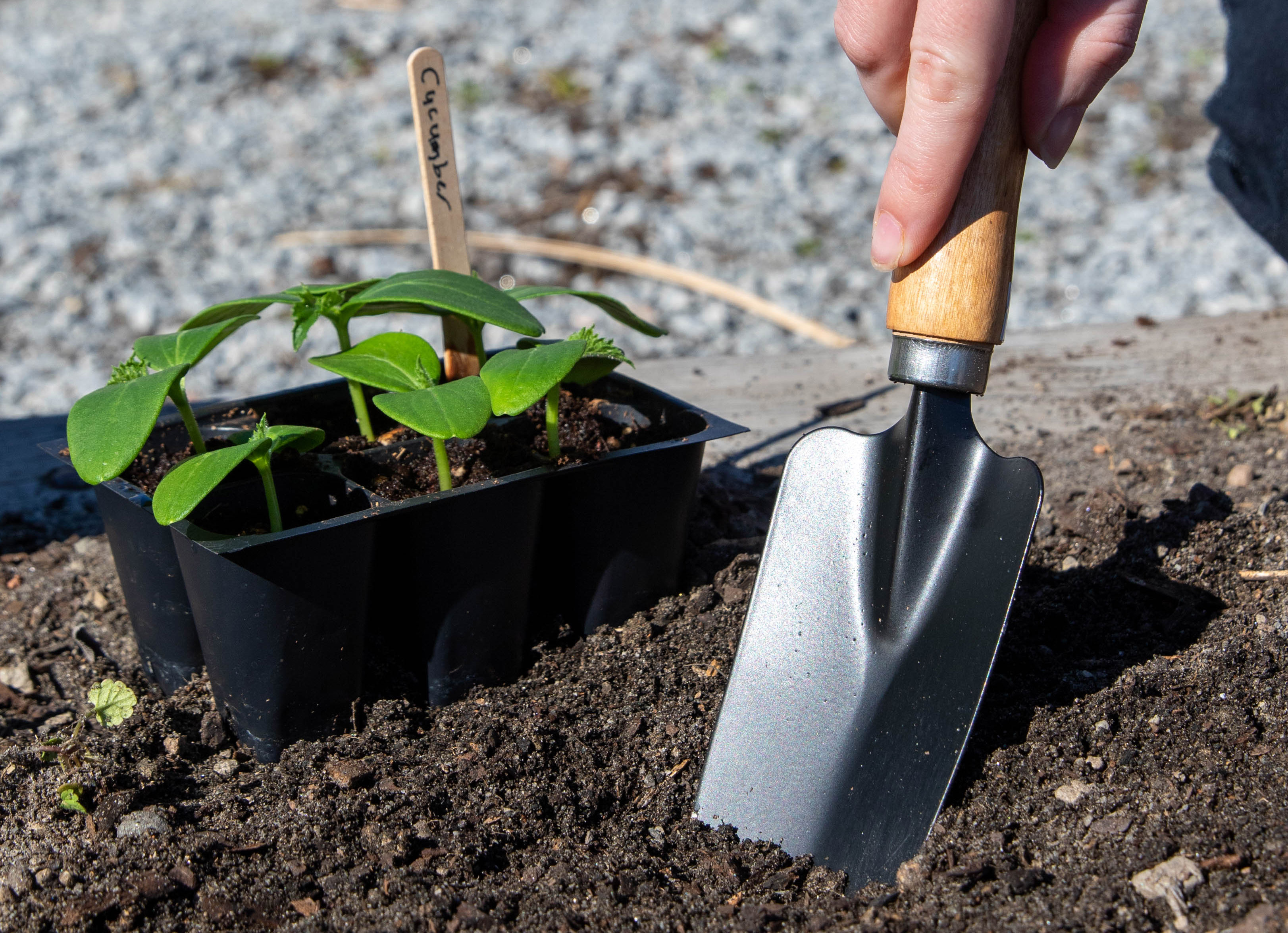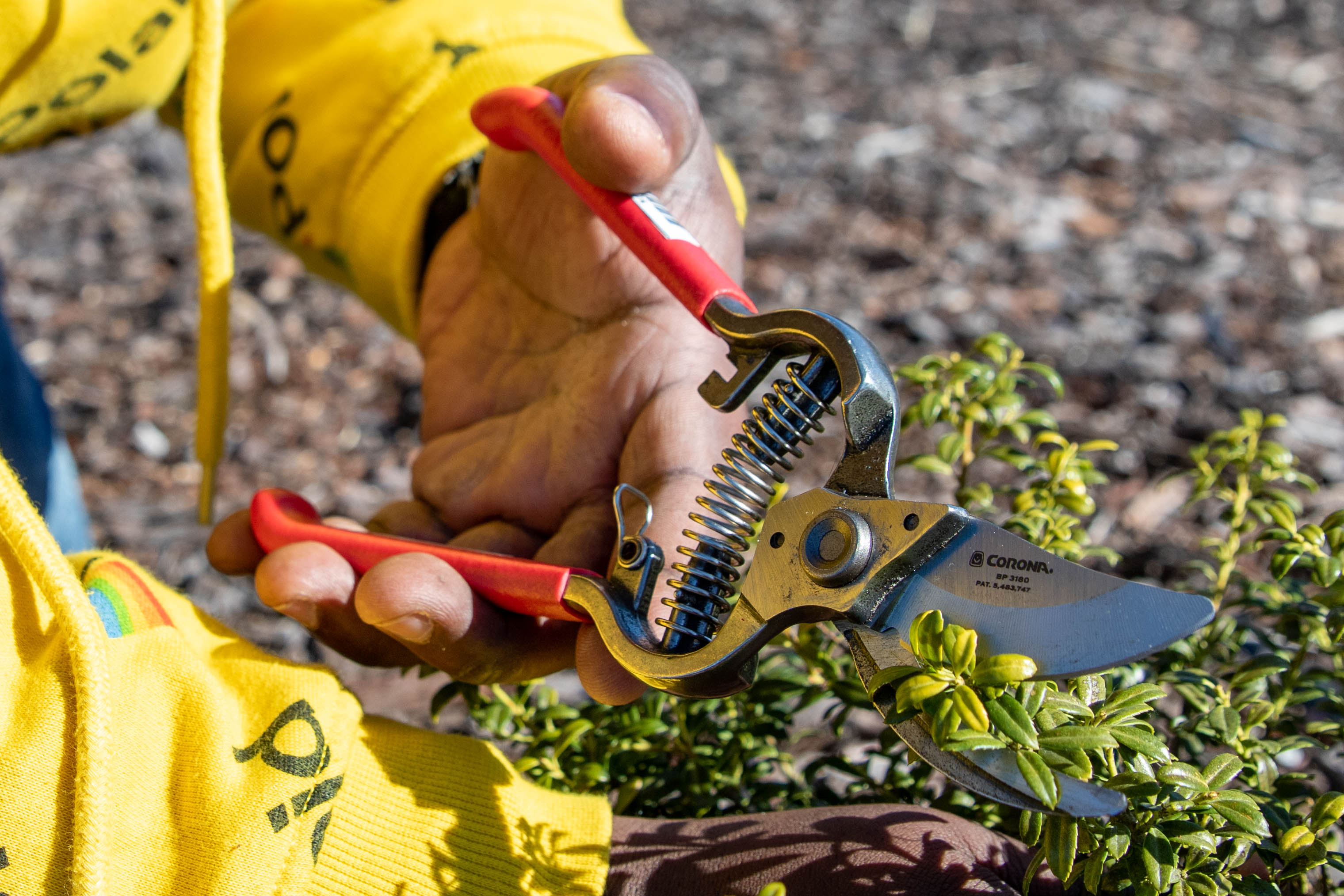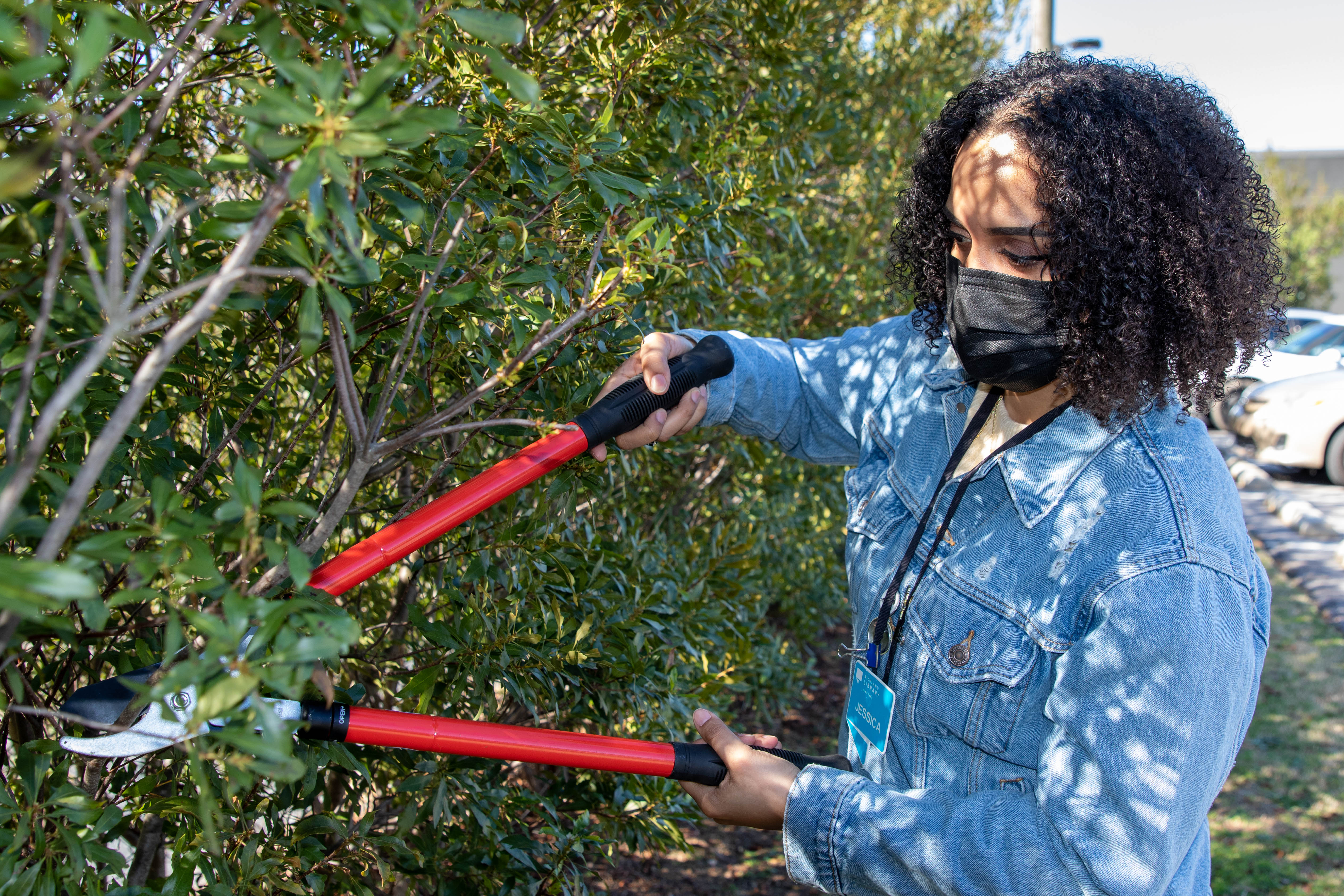- Kelsey Andrus
- Thursday, June 15, 2023
When I first started gardening, I had no idea how to select the proper tool for each task, but with a bit of research (and some failing forward) I learned to tend my garden so that it can grow to its full potential.
For gardeners, no matter the experience level, selecting the right tool for each job is essential for not only the aesthetics of your garden, but also the health and wellness of the plants. Hopefully this list of tools and their uses will help you learn which to select for preparing the soil, planting your garden, and pruning your shrubs and trees.
Preparing the Soil
Tiller + Cultivator
Tillers and cultivators can be two separate machines or integrated into a dual-purpose tool, like the one in our Library of Things. A tiller works to turn and break up compacted soil, creating the loose earth desirable for planting, while a cultivator mixes this soil with organic matter or compost to enrich and aerate the soil. With a machine like the Tiller + Cultivator, the two jobs are combined to create a garden bed with organic matter mixed in. The loosened soil makes it easier for plants to take root and water to soak in, and the addition of organic matter helps retain that moisture and fertilize the planting bed.
Leaf Rake
A leaf rake, also known as a fan or lawn rake, is designed to be springy and light enough to gather material from but not damage the grass or plants beneath. These rakes are typically used to gather leaves but can be used clear any type of light-weight debris out of garden beds or off lawns.
Bow Rake
Used to spread and level material about the home and garden, bow rakes are an essential tool for any gardener. The strong straight tines can break up compacted soil, weed garden beds and paths, spread mulch or gravel, or gather larger items like magnolia pods or pinecones. A versatile garden tool, bow rakes can be used almost anywhere but take care when on grass, where the tines can cut grooves in or tear up patches of lawn.
Garden Hoe
An ancient tool, the garden hoe has been moving and digging earth for millennia. This humble tool is used for sculpting the soil in a variety of ways depending on the gardener’s needs. It digs thin trenches for planting or irrigations; it mounds soil around the base of plants (called hilling) for water retention; it digs up weeds without leaving rhizomes for regrowth; it harvests roots without damaging neighbors; and it clears the soil of cover before planting. Simply put, it moves and cultivates the soil with precision.
Planting Your Garden
Round Point Shovel
The round point shovel is used for digging and is unparalleled for its useability. A true work horse of the garden, the beveled edges and rounded point allow the shovel to bite through ground covers and the ergonomic step helps add body weight when digging into compact soils. These shovels can be used for digging, trenching, transplanting, or turning a compost pile.
Hand Rake
A miniature version of a bow rake, a hand rake is used for tilling compacted soil, removing debris, and weeding. Since hand rakes are smaller and shorter than its larger cousin, they are great for getting into tight spaces without damaging the plants in a garden bed.
Trowels and Hand Shovels
Trowels and hand shovels are very similar tools that can almost be used interchangeably for digging, though they are designed for different jobs in the garden. A trowel is longer and thinner than a hand shovel, and therefore is best for digging deep but slim holes for transplanting around the garden bed. Hand shovels, being wider and shorter, are great for digging larger holes, moving plants or compost, or digging shallow trenches for direct sowing of seeds.
Pruning Shrubs, Trees, and Perennials
Bypass Pruners
Hand pruners are for making precision cuts to small branches, flowers, and stems and come in two head-types, bypass or anvil. Bypass pruners are preferable for these small cuts, as they offer a bit of protection to the plant against crushing the soft tissues and tearing bark. A bypass pruner or lopper use a scissor action with the blade passing next to, but not on top of, the hook. This allows for a clean cut that goes all the way through the stem while the head shape allows you to get closer to the branch collar so that you don’t leave a stub (which can expose the plant to infection). Use bypass pruners to selectively prune your shrubs, plants, and dwarf trees on stems and branches less that ½-¾ inches in diameter.
Bypass Loppers
Bypass loppers are a larger cousin of the bypass pruners. Utilizing the same cutting method, loppers have a larger head and longer handles, allowing for more force to be exerted during the cut and the ability to cut up to about 1 ½ inch diameter branches. Like hand pruners, loppers are designed for selective pruning with a head shaped for clean cuts close to the branch collar (reducing stubs and helping the plant fight disease). Often, loppers have telescoping handles offering a greater reach. For more information on selective pruning, please visit Clemson Extension’s Principles and Practices for Pruning.
Pruning Saw

So, what do you do if you need to prune something larger than 1 ½ inches in diameter? Grab your pruning saw. These saws are designed for selective pruning of small to medium sized branches and are quite powerful tools. With a curved blade, pruning saws are designed to cut on the draw stroke (coming back towards your body) with an ergonomic handle that allows you to hold the saw at different angles comfortably.
When pruning with a saw, you will make three cuts to take off a limb. The first is an undercut, from the bottom side of the branch, 12-15 inches from the trunk of the tree or shrub. Cut about halfway through the limb, or until the weight of the branch starts pulling downward, but before the saw is pinned inside the cut. The second cut is from the top of the branch, two inches farther out from the trunk, sawing through until the branch disconnects completely. After the limb has been removed, make a clean cut near the branch collar, while supporting the weight of the stub. This type of cut will prevent the bark and vascular tissue beneath from tearing away and leaving a wound in the tree.
Hedge Shears
When a neatly trimmed smooth-edged look in bushes is desired, grab some hedge shears. These are used to cut larger areas of small non-woody stems and soft growth on an even plain, giving hedges a boxy or geometric appearance. As this is not a natural growth pattern for most plants, shears are best used with formal hedges like boxwoods, for trimming down perennials, and for deadheading large swaths of flowering plants. Hedge shears should never be used on woody branches, even small ones, as this will damage the shears over time and leave unhealthy cuts on the plants.
Care of Tools
After digging, snipping, pruning, or sawing, it is important to take care of your garden tools to ensure that they last from season to season. After using them, make sure to rinse off any dirt or debris to keep the tools from rusting. Any time you cut or saw a plant stem, it is also good practice to sanitize your tools to prevent transmission of disease from one plant to the next.
Want to try the tools above? Borrow them for FREE from the Library of Things. For more gardening tips and information, click here.
